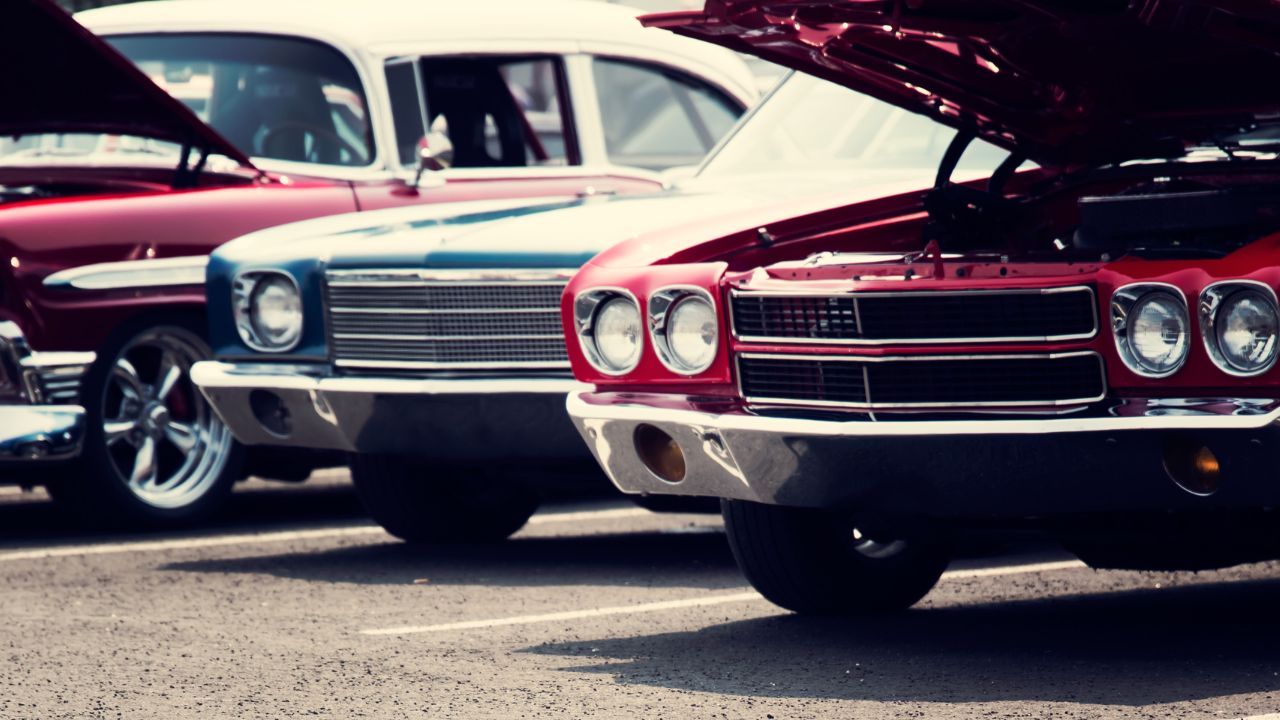
Larry was struck by the 1969 Ford Cobra's uniqueness when he first saw them. It was in a stunning condition, and still had its Raven Black paint finish. It was in need of a new paint job, but otherwise, the car was a great deal more original than Larry thought. This Cobra had been in Wisconsin its entire life and was rarely driven since new. Larry had the simple idea of bringing it up to the next level.
1969 Ford Cobra
This 1969 Ford Cobra car is a reference-quality muscle car and an investment grade vehicle. This car is the focal point of any collection. It has two longtime owners with over $75,000 investment. National Muscle Cars has it for sale. The car comes in three different configurations: base, R and RS. The engine can be taken out of the car, and the transmission or transaxle installed in front.
This is the most powerful Ford car of 1969. The Cobra transmission is four-speed and produces 335 horsepower. It comes standard with competition suspension. Motor Trend tested the Cobra 4-speed and reported that it did the quarter-mile in 14.5 seconds. Ram Air kept the driver in a good position, so there was no motion sickness. It is capable of turning sharp corners, but can also become hairy.

1993 Ford Mustang SVT Cobra
This rare 1993 Ford Mustang SVT Cobra was a limited production version of the Fox-body sports car. It came with a 5.0 liter V8 engine, tuned for greater power. This car was factory rated at 235 horsepower and 280 pounds-feet. The Mustang GT was the basis for the SVT tuning team's performance, so the car's heads were changed to GT40 parts. Other modifications to the engine were a modified intake and camshafts. It also featured vented disc brakes.
It was powered with a 302CI V8 that produced 235 horsepower. It was fitted with GT-40 Cast Iron heads featuring larger valves and more intricate intake ports. These heads were equipped with GT-40 lower intakes manifolds. They also had a special tubular cast aluminium upper intake based on the GT-40. The GT-40 manifold diverted the air into a series o rectangular ports. The Mustang Cobra's throttle body was also larger than H.O. spec engines.
1999-2004 Ford Mustang SVT Cobra
SVT manufactured the Ford Mustang SVT Cobra performance convertible from 1999-2004. It featured the same V6-powered engine, but was modified for better handling and performance. The Cobra received an aluminum flywheel in addition to its V6 engine. It also featured an upgraded suspension with individual damping rate. The car's suspension system was forged with 245/45ZR-17 BFGoodrich Comp/A tires. It has a distinctive sound that started as a low growl at moderate cornering speeds then developed into a clear howl at the limits of the car’s performance.
SVT engineers reduced the weight of the car by 50 pounds. Twenty percent of the car's weight was due to the engine. Six pounds were taken from the coil-on-plug, direct ignition system. The new Mustang SVT Cobra's 55/45 fore/aft ratio is about one foot smaller than the predecessor. The new SVT Cobra has a 110-pound weight difference to its predecessor.

2010 Ford Mustang Cobra Jet
Ford Mustang Cobra Jet, a supercar with high performance that debuted in 2008, is the Ford Mustang Cobra Jet. This is the fourth-generation of the supercar, and it has a variety of upgrades to help it achieve such performance. Cobra Jet's 2010 model features a brand new fuel system. This system uses a return system in its trunk. The intercooler coolant tank has been replaced with aluminum, which increases its capacity and withstands pressurization better. The supercar also features fans and line lock, which disables the rear brakes during a burnout.
The 2010 Cobra Jet starts out as a basic white Mustang, and then goes to Watson Engineering, a specialist performance car shop, to install a cage and other modifications. It also gets an NHRA-legal rear seat delete panel, and firewall and transmission access panels. The Cobra Jet logo and performance name are given to the vehicle after it is returned to AAI. The Cobra Jet's engine and suspension is modified to give it a much higher horsepower than its V6 counterpart.
FAQ
What is the length of an automotive training course?
A three-year course in automotive is required.
The first year is spent on theory, learning all about cars. The second year is dedicated to practical training, where you will learn how to fix cars, drive them, and do other jobs around the car. The final year is spent doing a placement at a local garage, which gives you experience in fixing real-world problems.
Is it hard to be a mechanic apprentice?
Although it's not an easy task, you will learn quickly and have many opportunities to advance.
You must have patience and perseverance. Also, you must know how to fix trucks, cars, and motorcycles.
Customers and family members will put pressure on your shoulders to help you succeed. You should not feel pressured into making difficult decisions.
If you like fixing cars, this could be a great career option. This is a job that allows you to earn a decent income and grow your business.
You might choose to take a different route. If this is the case, you might want to become a technician.
This requires you to use your technical expertise in support of other workers. Technical support could include helping technicians to troubleshoot issues or teaching them new techniques.
You can also become a service advisor. When customers bring their cars into a garage, they will receive advice and assistance.
Your decision depends on what you want to do. There are many options to choose from, and it is up to you which one suits you the best.
How can I prepare myself for a mechanic apprenticeship
It is vital to be able to comprehend what you are doing. You should be familiar with the mechanics of cars, and how they work. You will be able to know exactly where to begin when you arrive at the garage for your first day.
Also, you need to know how fix simple problems, such as tires and lights that aren't working.
This will teach you how to diagnose problems and fix them yourself.
For the purpose of putting them back together again, you'll need to be able to identify how each piece fits together.
Finally, you need to be able to safely and efficiently use tools.
All of these factors will allow you to become a skilled mechanic.
Statistics
- The U.S. Bureau of Labor Statistics (BLS) reports that the job outlook for automotive service technicians and mechanics is expected to decline by 4% from 2019 to 2029. (indeed.com)
- Apprentice mechanics earn significantly less hourly than mechanics who have completed training, with a median wage of approximately $14.50 an hour, according to PayScale. (jobhero.com)
- According to the BLS, total auto technician employment is expected to exceed 705,000 by 2030. (uti.edu)
External Links
How To
How to properly diagnose your car for repair
You should first examine the symptoms your car is showing to determine if it requires repairs. Next, you can follow these steps in order to diagnose your car.
-
Check engine lights. Check the dashboard light indicators such as the engine light indicator, the oil pressure gauge, the battery light indicator, the coolant temperature gauge, and the RPM gauge. If any of these indicators have been flashing continuously for several days it could mean that there is something wrong with your vehicle.
-
Examine the treads of the tires. Tires can become worn and cause problems in handling and braking. The treads of the wheels should be inspected as well. They should look clean and be smooth. It is best to take off the wheels and remove them. You can check the tread wear with a flashlight.
-
Check the level of brake fluid. You should always keep track of the amount of brake fluid in your vehicle. This will ensure your brakes function properly. Low brake fluid levels can cause brake failure when you apply pressure.
-
Test the suspension system. A suspension system is designed to absorb vibrations and shocks. It improves control and allows for smoother accelerations or decelerations. A suspension problem can cause your vehicle to feel wobbly and shake uncontrollably. To determine whether your vehicle may have a suspension issue, you can try to put weight on the rear or front axle and watch the movement.
-
Examine the steering column. Steering columns connect the steering wheels to other parts of the vehicle. Steering columns can be damaged by accidents. You should replace your steering column if it feels loose or unstable.
-
The exhaust pipe should be observed. Exhaust pipes move gases from combustion chamber to atmosphere. Exhaust pipes that are cracked or leaking can allow harmful fumes to enter your cabin. Additionally, your tailpipe should be fixed immediately if it is bent.
-
Check under the hood. Take a look underneath the hood to find any strange or unusual items. You could have fluids leaking from the engine. If you smell something strange coming from your engine compartment you should call a professional technician.
-
You should inspect your air filter. The vehicle's outside environment may cause the air filter to collect dust and debris. Dirty air filters can cause your vehicle to run poorly. Replace your air filter regularly.
-
The fan belt should be checked. Your vehicle's fan belt connects the engine to the transmission. The engine will not turn if the fan belt breaks. Replacing the belt is simple. You will need a screwdriver, pliers and a pair of pliers.
-
The radiator hose and hoses should be checked. The radiator-hose carries water to the engine. It can crack or become damaged and leak hot liquid onto an engine. The hose can be repaired with a pair or needle-nosepliers, and a wire brush.
-
Be sure to inspect your windshield wipers. Windshield wipers work by using electricity to remove rain and snow. If they stop working, streaks could be left on your glass. Change the washer fluid to fix the problem.
-
Check the battery cables. The batteries provide power to the electrical systems within your car. Make sure you disconnect the negative cable before replacing batteries. Failure to do so can damage your alternator.
-
Pay attention to your headlights. Headlights illuminate the road ahead of you. They can make it difficult to see if they stop working. To check if the bulbs have gone out, you can inspect them.
-
Make sure you have your lights on. Lights warn other drivers when you approach them at night. It could cause distraction and even lead to an accident if it doesn't work.
-
You should inspect your brakes. Before you collide with another vehicle, brakes will slow down the car. If they aren't working correctly, you could lose control of your car and crash.
-
Change your oil. Your engine will stay lubricated by the oil. It prevents metal parts from rusting too quickly. It is recommended to change the oil each month.